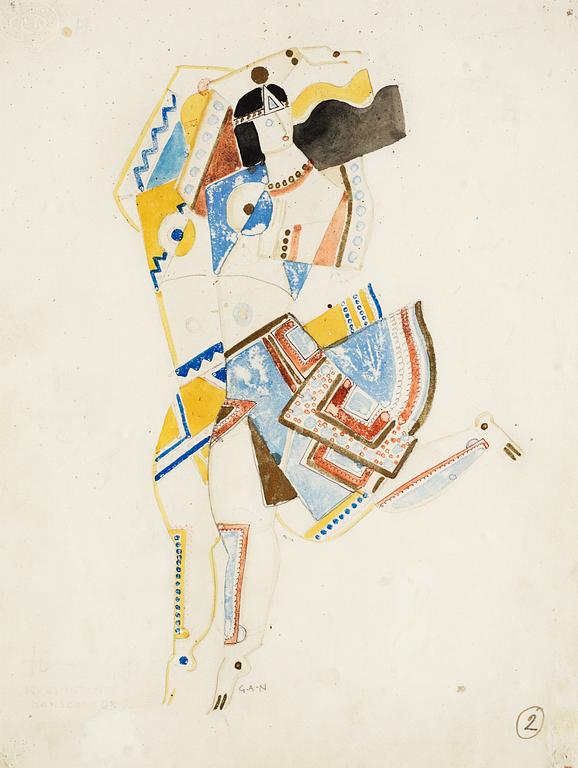Gösta Adrian-Nilsson
"Danserskor" (Dancers)
Signed GAN. Executed in 1921. Watercolour and pencil 31 x 23.5 cm.
Provenance
Leo Pergament, Stockholm
Galerie Bel'Art, Stockholm
Exhibitions
Liljevalchs konsthall, Stockholm, "GAN 1884 - 1984", 6 April - 20 May 1984, cat no 149.
Norrköpings Museum, "Svenskt Avantgarde", 1 June - 9 September, 1979, cat no 27 and reproduced.
More information
Costume study for Moses Pergament's balet "Krelantems och Eldeling", in Stockholm 1927.
Designer
Gösta Adrian-Nilsson is most notable as a visual artist, and he is a pioneer of Swedish modernism. He studied at the Tekniske Selskabs Skole in Copenhagen and later for Johan Rohde at Zahrtmann’s school in Copenhagen. As an avant-gardist, Nilsson was constantly searching for new influences. In Berlin, he was influenced by the circle around the radical magazine Der Sturm, through Kandinsky and och Franz Marc. In Paris through Fernand Legér and the artists in his circle. GAN was an eclectic in the positive sense of the word. He took the the artist styles of the 1900s and created new impressions. Symbolism, cubism, futurism, expressionism, constructivim and Theosophy were the colours occupying his internal pallet. He had a sharp eye for the masculine and his painting was often energized by the vitality of modern technology, vibrant eroticism, and echoes of tyrants. No other Swedish modern artist exhibits such a unique style.
Read more






























